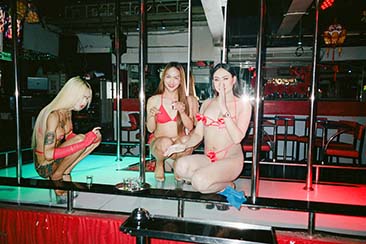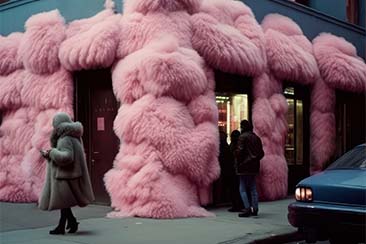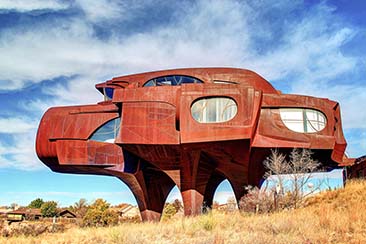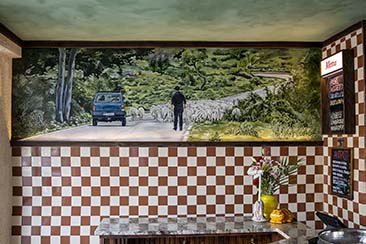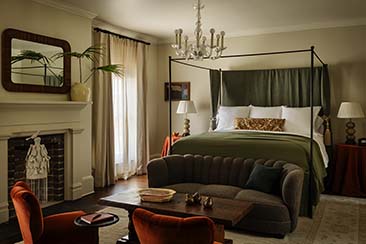| Author | Reviewed by ✅ |
|---|---|
| Amelie Jones Senior Staff Writer, We Heart Amelie Jones is a senior staff writer for We Heart, and has been delivering stories since 2016. Her work spans an impressive range; from luxurious hotels and cutting-edge design exhibitions to the latest shops, product launches, and fashion trends. Beyond her editorial expertise, Amelie is passionate about health and wellness, family lifestyle, and home improvements, bringing a well-rounded perspective to all she writes. | Lisa Davidson Co-owner and co-Editor in Chief, We Heart Lisa Davidson is the co-owner and co-Editor in Chief of We Heart. With a passion for exploring the world and discovering new culinary experiences, Lisa combines her love for adventure with a keen eye for design and culture. Her leadership at We Heart has helped shape it into a go-to source for readers seeking inspiration on modern living. Through her work, Lisa shares her enthusiasm for the finer things in life, offering a fresh perspective on how to live well and travel better. |
Are you ready to let your computer create art for you? Well, welcome to the world of AI art generators! These fancy computer programs use artificial intelligence algorithms to create all sorts of art, from images and videos to music and text.
With AI art generators, you can train the program on a dataset of existing art or let it create something completely new using techniques like generative models. The AI algorithms used can generate new art with a bit of creativity, but mostly it’s just using pre-learned patterns and styles. And the best part? You can even customise the art with parameters like colour schemes and shapes. You could even make your own NFT token.
One of the most popular AI generators is called GAN (Generative Adversarial Networks). This bad boy uses two neural networks to create art – one generates the art and the other compares it to real-world examples. This way, the AI art generator can improve its output and make it look more realistic. Another AI art generator is Pikaso by Freepik which is able to transform simples sketches in beautiful pieces of art.
But don’t forget, an AI Content Generator is not truly autonomous. They need to be fed and trained with data to be able to create new art. And the final output is limited by the quality and quantity of data, the algorithm, and the parameters set by the user. So, let your imagination run wild and see what your computer can create for you with AI art generators!
We wanted to take a look at which of the growing bunch is the best AI art generator out there. The quality is high, but we’ve whittled it down to the cream of the crop. Let’s take a look…
The Best AI Art Generators
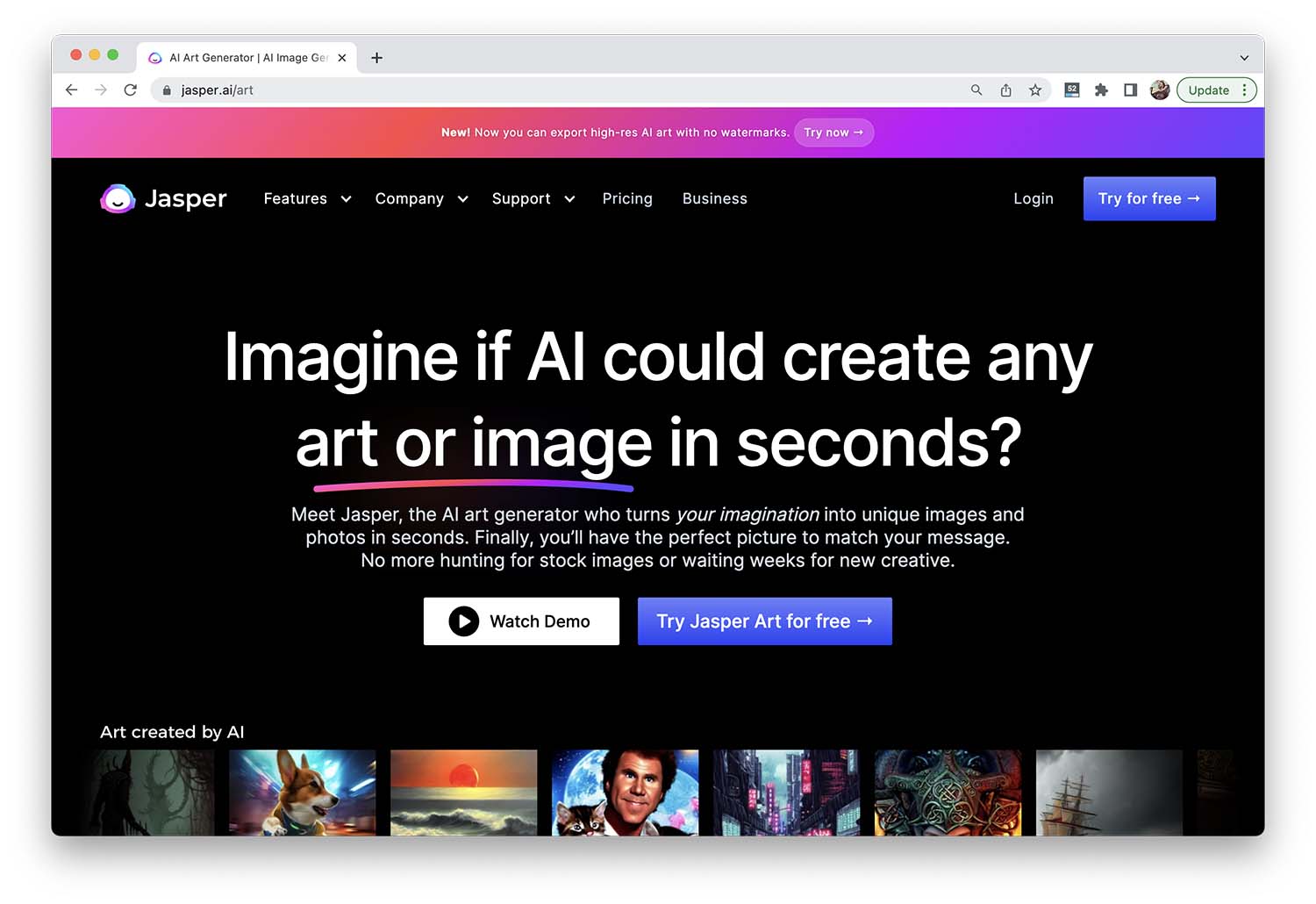
Jasper AI Art Generator
Jasper AI Art Generator
Jasper is an AI Content Platform, which allows users to create unique images and videos at scale, using natural language input. The platform uses OpenAI’s GPT-3 based AI models, to generate images and videos that match the user’s description.
Users can interact with the AI art generator through a web-based interface, where they can input a text description of the desired image or video, and Jasper’s AI will generate a custom-made one for them. The platform provides a wide range of customisation options, like adjusting the colour scheme, lighting, or different design elements to match the brand or the message of the image.
Jasper’s AI Content Platform is targeted for businesses and marketers, allowing them to create a large amount of unique visual content in a shorter amount of time, making it a useful tool for those who need to generate visual content on a regular basis.
It’s worth noting that the quality of the images and videos generated by the Jasper AI Content Platform may vary depending on the complexity and specificity of the input and the parameters set, also while the AI can generate new images and videos it may lack the artistic touch and creativity of a human artist.
Key Features of Jasper
Generative models: Jasper’s AI uses GPT-3-based models, which are highly advanced machine learning algorithms capable of understanding and responding to natural language input.
Image and video generation: Jasper is able to generate a wide range of images and videos from text descriptions, including scenes, objects, and abstract concepts.
Customisation options: Jasper provides a wide range of customisation options, allowing users to adjust the colour scheme, lighting, and design elements of the generated images and videos to match the desired look and feel.
Automatic image and video editing: Jasper has a number of image and video editing tools built-in, allowing users to quickly and easily adjust the generated images and videos, and fine-tune them to match their desired output.
Automatic optimisation: Jasper’s AI will optimise the output according to the specific medium, whether it’s a social media post, website banner or a billboard.
Large library of pre-trained templates: Jasper has pre-trained templates of different styles and formats, allowing users to generate images and videos quickly, with less input needed.
Scalability: Jasper can process large number of request and generate large amounts of unique images and videos, which makes it a useful tool for businesses and marketers who need to create visual content on a regular basis.
Integration: The art generation platform can be easily integrated with different CMS and marketing platforms, allowing for a smooth workflow for the marketers.
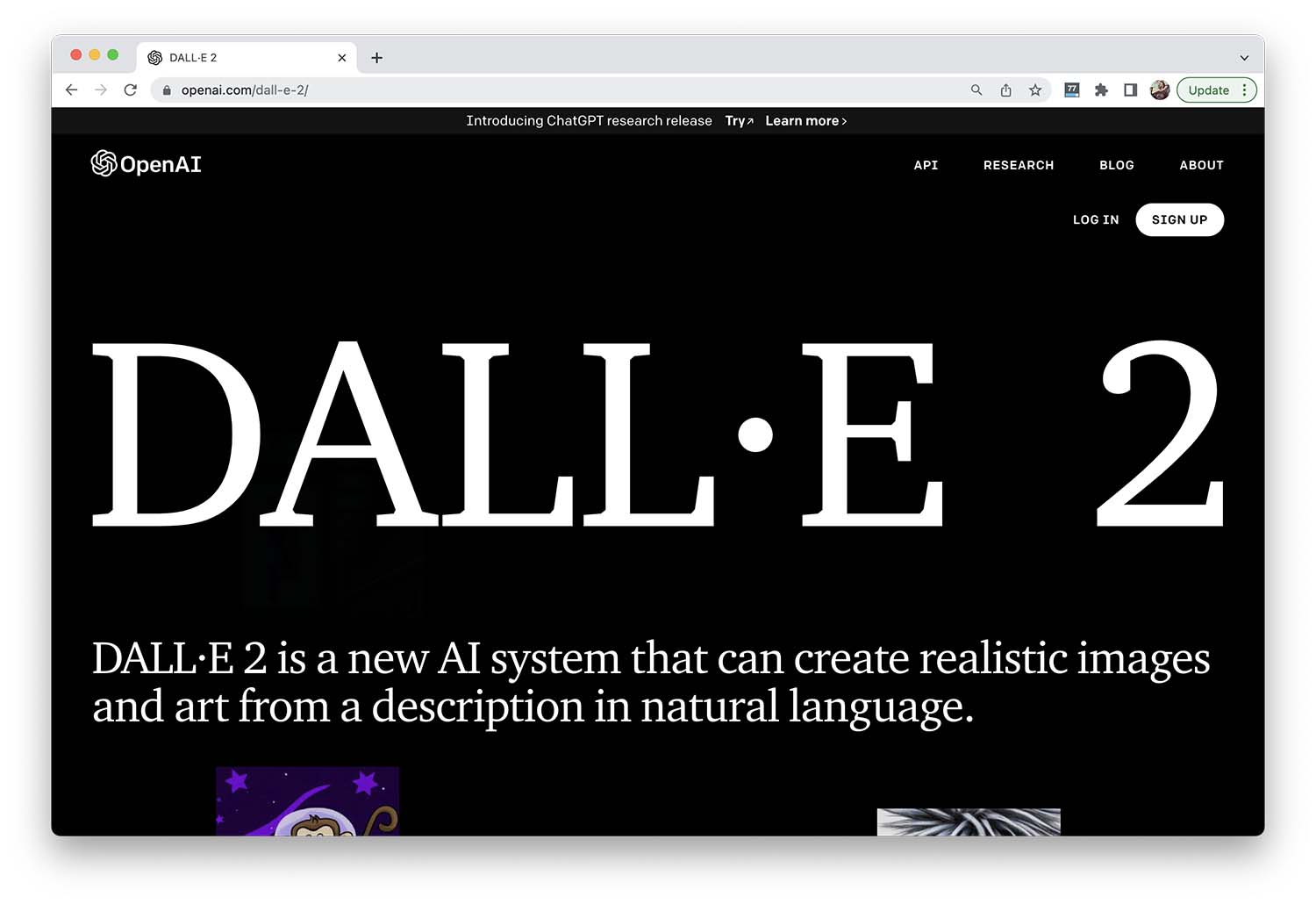
DALL-E 2
DALL-E 2
DALL-E 2 is like a magical art factory that can generate all sorts of amazing images and videos just by using words as the blueprint. It’s like giving the factory a description of what you want, and it’ll spit out a beautiful piece of art that’s tailored just for you.
And the best part is, this AI art generator is not limited to just creating copies of things that already exist in the world, it can also generate totally new and unique images and videos too! It’s like having your very own personal Picasso at your fingertips.
It can also generate images and videos in resolutions much larger than previous version, so the art it creates is more realistic. DALL-E 2 is definitely something to be excited about!
Key Features of DALL-E 2
Prompt-based generation: The ability to generate high-quality, diverse images and videos based on textual input, such as a description of an image or a scene.
Free-form generation: The ability to generate images and videos from scratch without the need for a prompt.
High resolution: DALL-E 2 can generate images and videos at a higher resolution than the original DALL-E.
Diverse and unique outputs: DALL-E 2 is trained on a large dataset and is able to generate a wide range of diverse and unique images and videos.
Control over fine-grained details: DALL-E 2 allows users to control over fine-grained details of the generated images and videos, like adjusting the colour scheme, lighting, and different design elements.
Generalisation across different concepts: DALL-E 2 can generalise across different concepts and generate images and videos that match the user’s description.
Speed and efficiency: the platform is optimised for fast and efficient image and video generation, making it useful for businesses and marketers to create a large amount of unique visual content in a shorter amount of time.
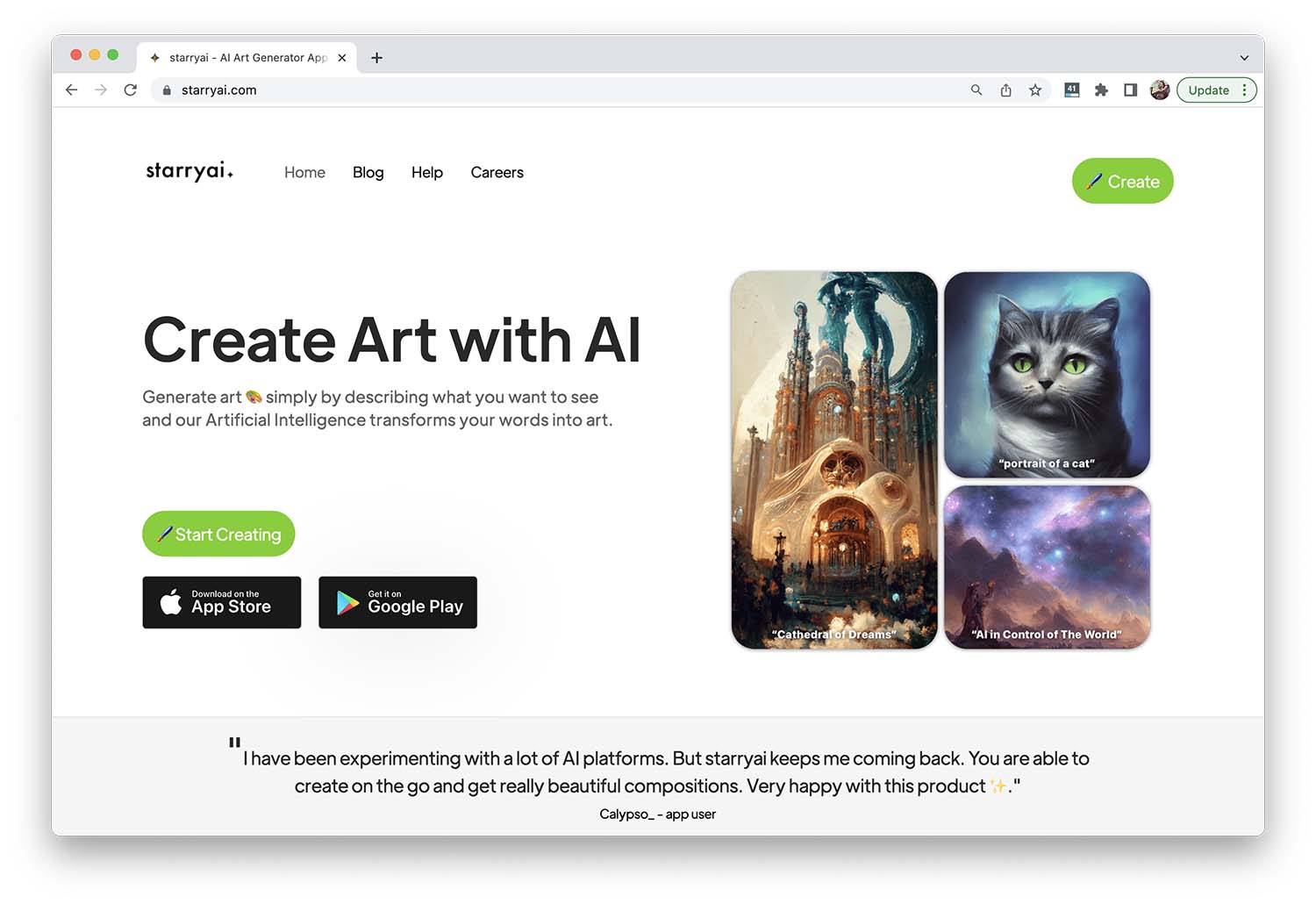
Starry AI Art Generator
Starry AI Art Generator
StarryAI is one of the best AI design tools around, and can make your wildest art dreams come true. With StarryAI, creating AI art is as easy as pie, or should we say, as easy as a text prompt!
Think about it, usually creating AI art is a real headache, it takes technical know-how and a whole lot of time. But founder Mo had a different vision. He wanted to make creating AI art accessible to everyone, even those of us who can’t code. And that’s exactly what StarryAI does.
With StarryAI, all you have to do is enter a text prompt into the app and BAM! You’ve got yourself a stunning piece of AI art. No coding required. Not to mention, it’s available on both web and mobile platforms.
Mo put it best when he said, “I thought, like, why isn’t this available for everyone? Like, why can’t I share this with my friend and he should be able to instantly create art without getting into the technical aspects of it?”
But don’t let the simplicity fool you, StarryAI is powered by two AI models, Altair and Orion, that work together to create truly mesmerising artworks and images. Altair uses VQGAN-CLIP model, while Orion uses CLIP-Guided Diffusion. Together, they’re a dynamic duo that will bring your text prompt to life.
Key Features of Starry AI
Free to use: Generate up to 5 artworks for free daily and without watermarks.
Full ownership: The users of the AI art generator will have full ownership of their creations. They can use them for their next Art project, print them out or share them on social media.
Customisability: A variety of different models, styles, aspect ratios, and initial images are available for users to choose from in order to customise their creations.
State of the art methods: The AI art generator uses the latest AI methods to assist users in their art creation. The models used in the platform go through regular updates to ensure the improvement of the user’s creations.
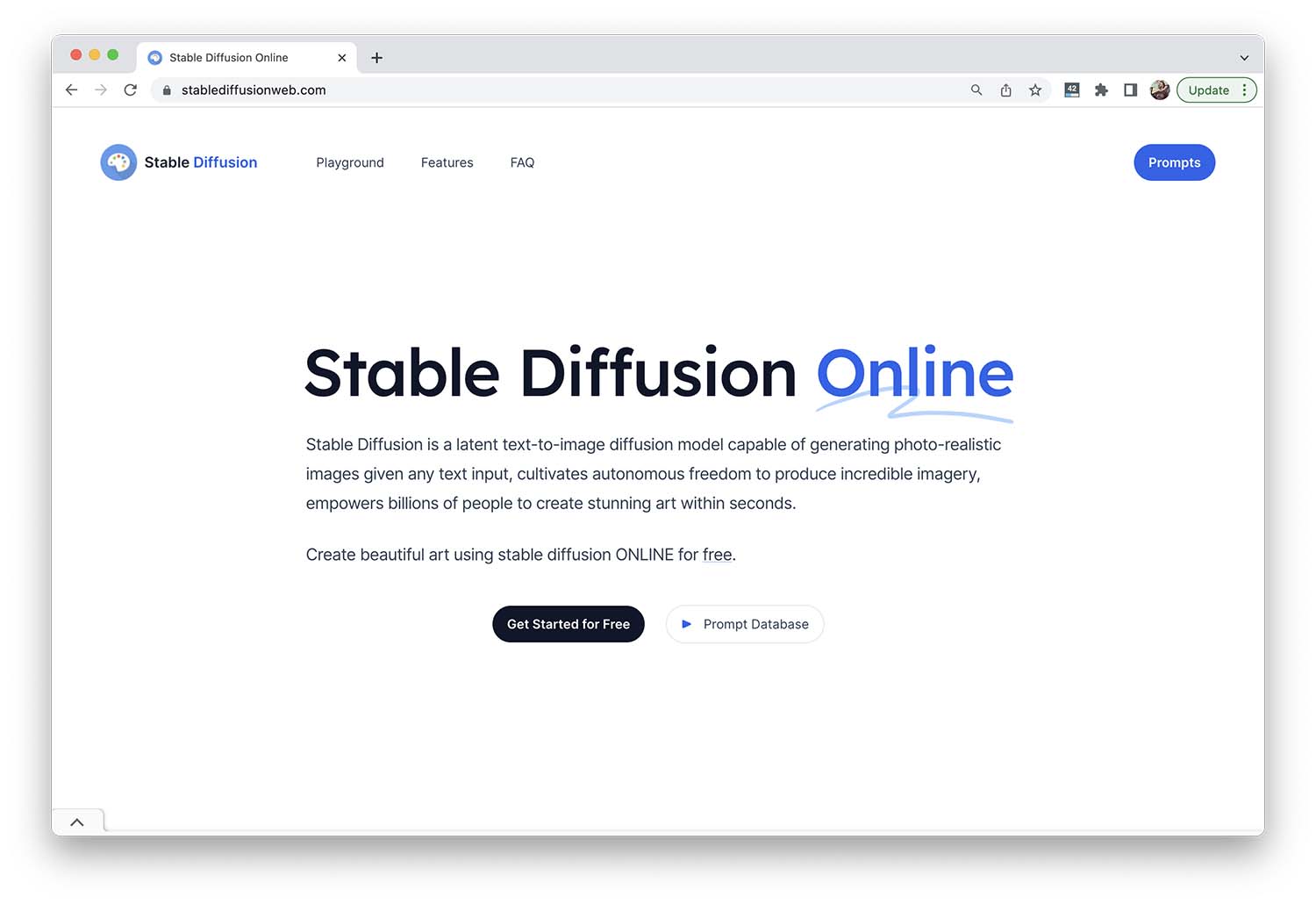
Stable Diffusion AI Image Generator
Stable Diffusion AI Image Generator
Stable Diffusion is a cutting-edge deep learning model that turns words into images! With Stable Diffusion, its art generation is based on text descriptions with just a few clicks; some users have even explored it as a NSFW AI image generator, highlighting the model’s versatility. It’s not just limited to text-to-image generation though, it’s also great for tasks like inpainting, outpainting and image-to-image translations, all guided by a simple text prompt.
But what makes Stable Diffusion so special? It’s a latent diffusion model, which is a fancy way of saying it’s a deep generative neural network developed by the CompVis group at LMU Munich. It’s the brainchild of a collaboration between Stability AI, CompVis LMU, Runway and with the support of EleutherAI and LAION.
And the best part? It’s publicly available, the code and model weights have been released for all to use, so you don’t have to worry about needing a supercomputer or spending a ton of money on cloud services. All you need is a consumer-grade GPU with at least 8 GB VRAM and you’re good to go! So why wait? Unleash your inner artist and give Stable Diffusion a try!
Key Features of Stable Diffusion
High quality images: The AI image generator can generate high-quality images of anything you can imagine in just seconds. Simply type in a text prompt and hit “Generate” button to see the magic happen.
GPU enabled and fast generation: The platform is optimised for speed, running on GPU, allowing for quick and efficient image generation.
Anonymous: stablediffusionweb.com values your privacy, and it doesn’t collect or use any personal information, nor does it store your text or image.
Freedom: Users have complete freedom to enter whatever they want into the text prompt, with no limitations on what can be entered.
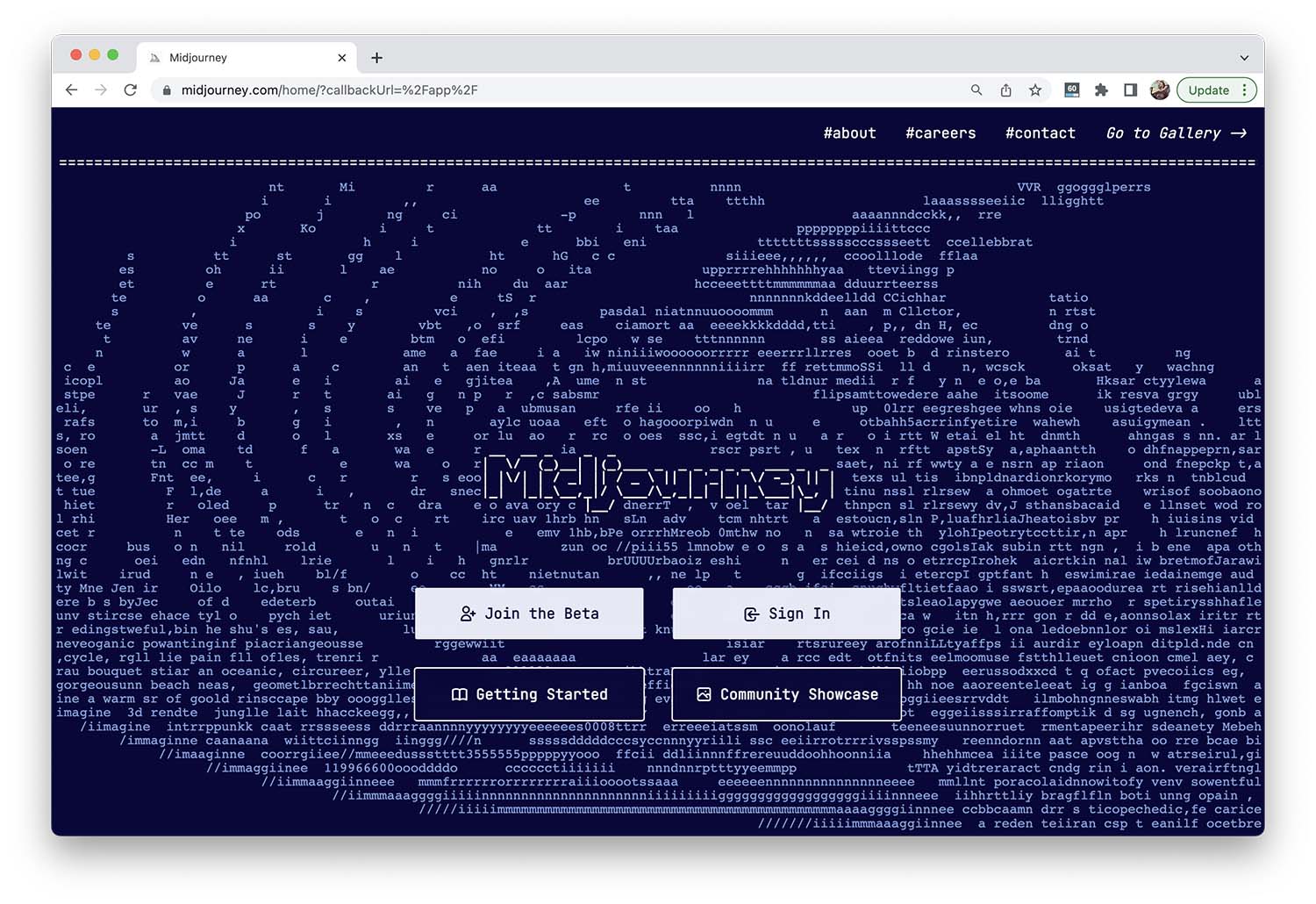
Midjourney AI Art Generator
Midjourney
MidJourney is an AI-powered text-to-image generator that creates beautiful visuals based on your text prompts. Unlike other text-to-image AI like DALL·E 2 or DALL·E Mini, Midjourney doesn’t require coding and it’s not a web app, instead it works as a bot on a popular chat app called Discord, where you can interact with it. Discord is similar to Slack, and it works on both desktop and mobile.
As a free or trial user, you will be able to interact with the bot in a public chatroom where other users are also doing the same. It can be chaotic, but it’s also a fun way to get started, you can see the prompts and results of other users in real-time. Once you become a paid user (starting from $10 a month) you will have access to a private conversation with the bot, which is a more calm experience.
Generating images is easy, you just need to type a sentence and watch as the AI gradually generates your images, from initial blurry colours to high-definition thumbnails. It’s mesmerising to watch, and it increases the sense of anticipation.
Key Features of Midjourney
Photorealistic: Midjourney generates images that look like highly detailed pieces of art, realistic CGI, or expertly Photoshopped photographs.
Ease of use: With the option to choose the aspect ratio, users can easily create images that are perfect for Instagram stories, Youtube thumbnails, or book covers in a faster way.
Mobile use: The Discord app offers a better mobile experience than other AI art generators, making it easy to generate images on-the-go or even in bed when you have a sudden idea at 3am.
Unlimited use: MidJourney offers an all-you-can-eat mode for $30/month, although there may be limitations on the speed of image generation at some point.
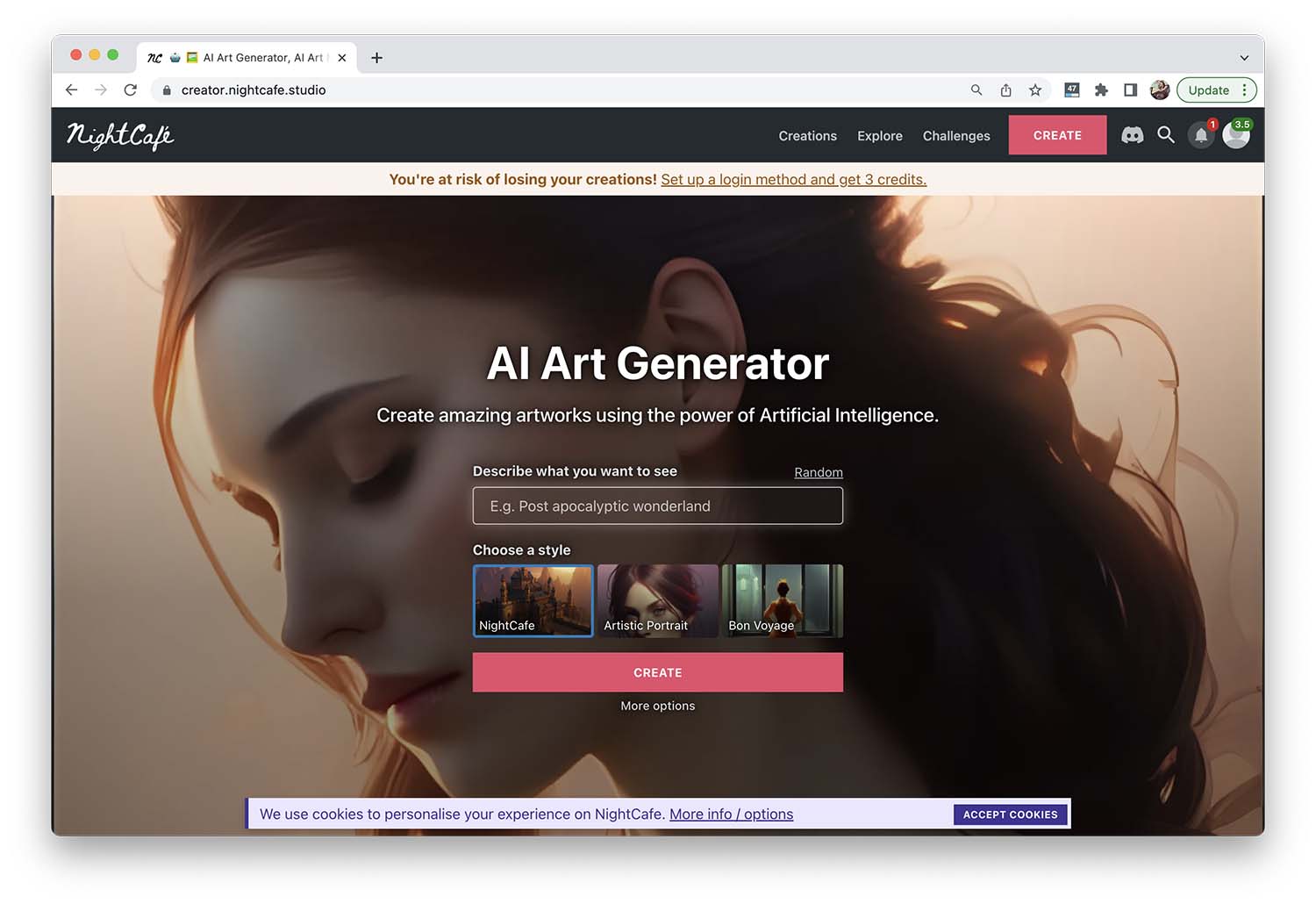
NightCafe Creator
NightCafe Creator
Are you ready to turn your photos into masterpieces and create stunning artworks from just a text prompt? Look no further than NightCafe Creator, the ultimate AI Art Generator app!
With NightCafe Creator, the possibilities are endless. Using neural style transfer, you can transform any photo into a work of art. And with text-to-image AI, you can create something truly unique and original, all from a simple text prompt.
But the best part? Your creations on this AI image generator are all yours to keep and do with as you please (as long as you have permission from the copyright owner of any input images, and subject to copyright laws in your jurisdiction).
And the best part? It’s all available for free online, and even on Android and iOS phones. Just save it to your home screen and you’re good to go. So why wait? Unleash your inner artist and download NightCafe Creator today!
Key Features of NightCafe
Web and mobile: With NightCafe Creator, you can easily create AI-generated artworks from your laptop, tablet, or mobile device, and review them from any device.
Unique creation tools: Experiment with different styles and techniques to create something truly unique. The app offers the VQGAN+CLIP method, to generate art from a text prompt.
Free to use: Generate, edit, and download up to 28 artworks per day for free, without watermarks.
Tools for power users: The app also offers bulk creation and bulk download options, as well as the ability to duplicate, evolve, and upscale your creations.
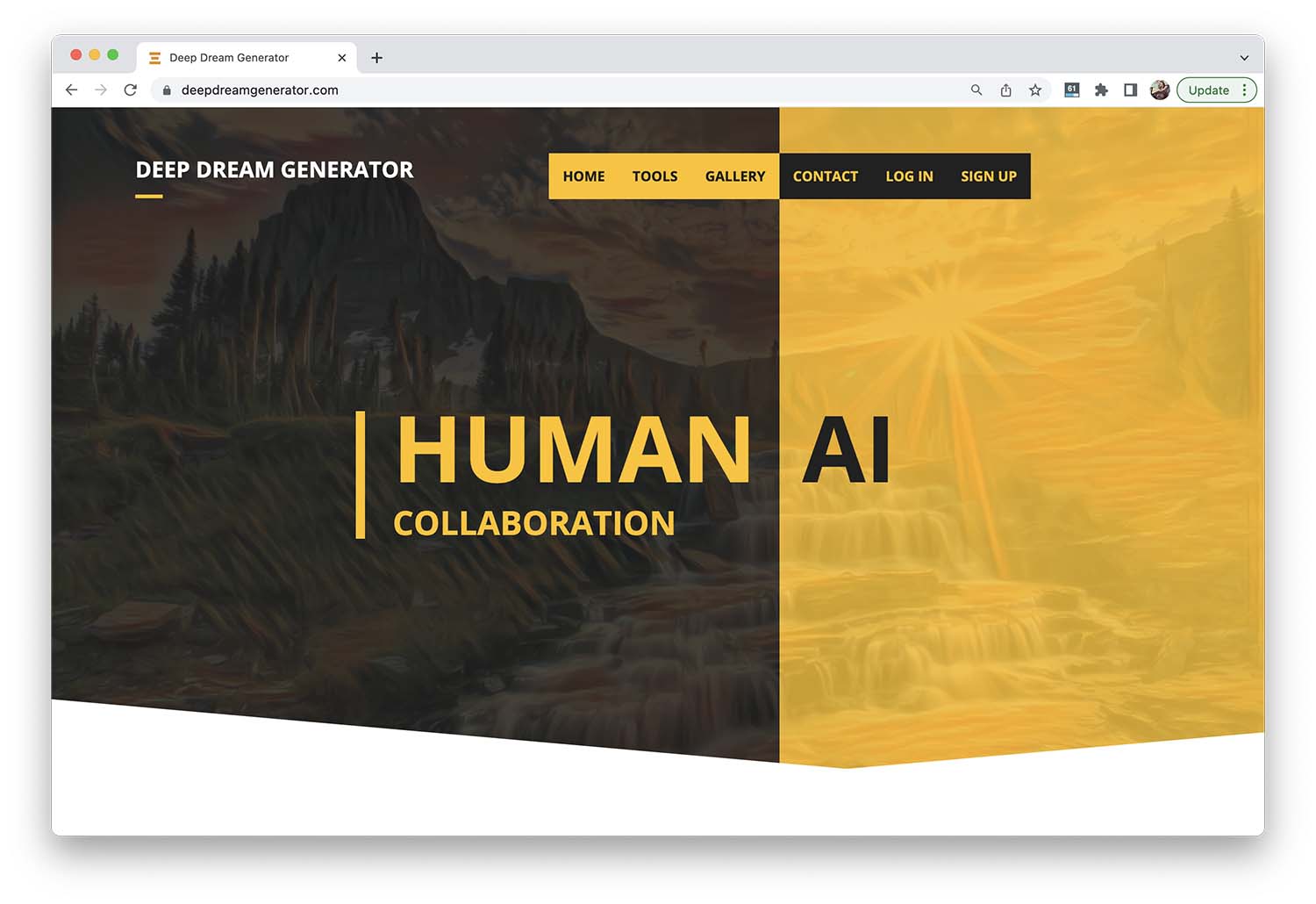
Deep Dream Generator
Deep Dream Generator
Deep Dream Generator, a team of tech experts and creatives, is on a mission to revolutionize the way images are generated. Their AI-powered product makes it easy for anyone to produce unique and high-quality images quickly. Users don’t need to be professional designers or have extensive coding knowledge, they just need to provide some guidance and let the algorithms do the rest.
The Deep Dream Generator is like a magic genie for all image creation needs. With minimal input, users can produce high-quality and unique images instantly. This cutting-edge technology is unlike anything else on the market. The team at Deep Dream Generator has spent years perfecting the algorithms and user experience to make it as user-friendly and enjoyable as possible.
Key Features of Deep Dream Generator
Great for psychedelic artwork: The algorithm was initially invented to help scientists and engineers understand what a deep neural network is seeing when it processes an image, but it has since evolved into a new form of psychedelic and abstract art.
Flexible subscriptions: available for advanced users, they allow for monthly payments with rechargeable energy points. This option is more cost-effective for frequent users. Additionally, energy packs offer the option to purchase a large number of one-time use energy points at once, which will be used before points from a user level or monthly subscription.
Secure: Data security is a top priority for Deep Dream Generator, using Google’s technology and expertise to ensure both user and customer data is secure and compliant.
Sustainable: The company is also dedicated to sustainability, being the only major provider to purchase enough renewable energy to cover all operations, including workloads.
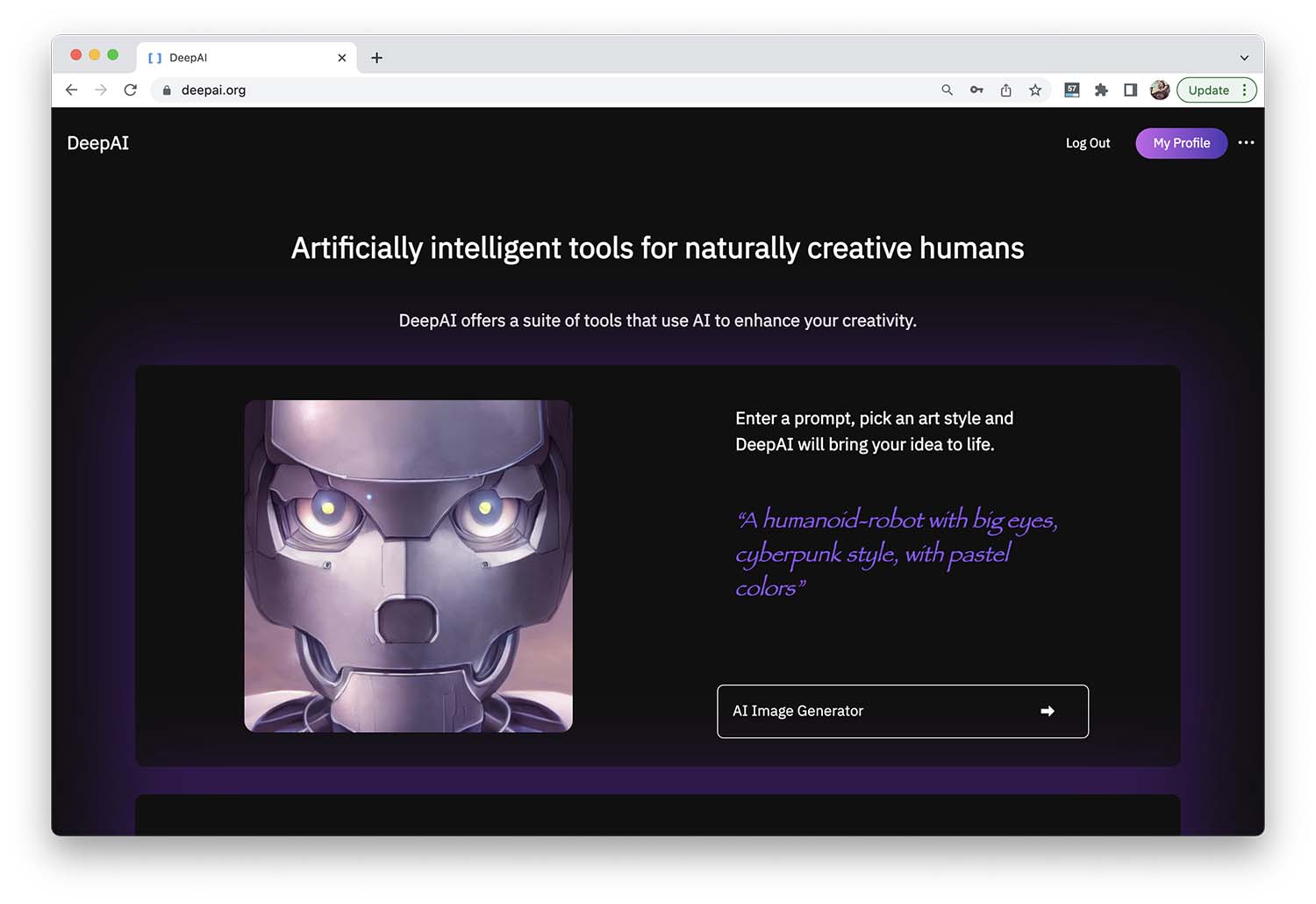
DeepAI Art Generator
DeepAI Art Generator
Want to turn your wildest imagination into a reality? Look no further than DeepAI – the ultimate fun-loving, free-to-use AI art generator!
With just a few clicks and a dash of creativity, you can easily bring your wackiest ideas to life. Simply type in your text prompt and choose an art style, and voila! In just minutes, you’ll have a one-of-a-kind image ready to download.
But don’t just take our word for it, give it a try and see for yourself! Whether you’re a pro designer or just starting out, DeepAI makes it a breeze to create unique and mesmerising images.
And the best part? DeepAI is all about keeping things easy, quick, and most importantly, fun! Plus, there’s a premium version available for just $5 a month, packed with even more art generation features to take your image generation game to the next level.
And don’t worry about image licensing, DeepAI has got you covered. All content generated by their tools and APIs are free of copyright and ready for any legal purpose, including commercial use. So, what are you waiting for? Unleash your inner artist with DeepAI and let the fun begin!
Key Features of DeepAI
Easy to use interface: DeepAI’s user-friendly interface allows for simple and efficient image generation with just a text prompt and a desired art style selection.
Affordable premium options: A premium version of the service is available for a low monthly cost, offering advanced features for enhanced image generation.
Customisable options: Users have the ability to adjust various elements of their generated images, including texture and colour details.
Great for ‘toon styles: The CartoonGAN tool allows for the conversion of images into cartoon styles.
Bonus AI Art Generators
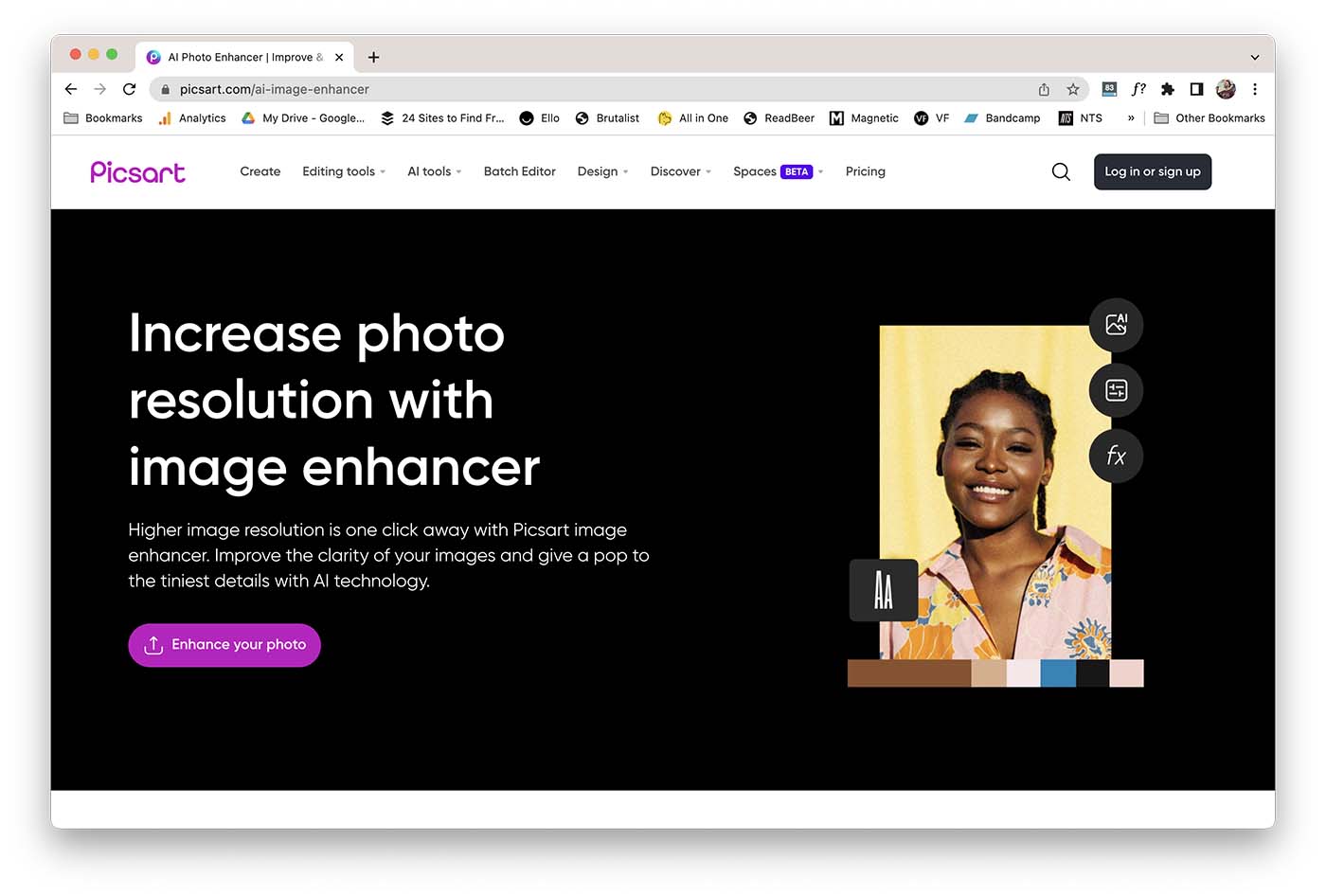
Picsart AI Art Generator
Picsart AI Art Generator
From a company that specializes in multiple AI editing tools comes the Picsart AI Art Generator, and it’s just as easy to use as the rest of their catalog. Simply type in a detailed description of what you want to see and watch the AI work its magic. You can find their program inside the Picsart photo editor and generate images completely for free.
With the Picsart AI Art Generator, you can produce visuals in a number of styles, from oil paintings to anime. Once done, use their AI photo-enhancing tool to customize your creations further. Their impressive AI algorithm can truly empower any artist to harness their creativity, whether they’re using the generator to sell products or explore new possibilities.
Key Features of Picsart AI Art Generator
Free to use: While Picsart does have a premium version, their AI art generator is free to use.
Easy to use: You don’t have to be a techy or graphic artist to get the most out of this tool. Just pop in a description of what you want and press the “Generate Image” button.
High-quality images: No matter what design you want to make, you’ll always produce a high-quality image.
Access to multiple tools: Picsart isn’t just an AI art generator. Thanks to its suite of tools, you can edit your image right after you make it.
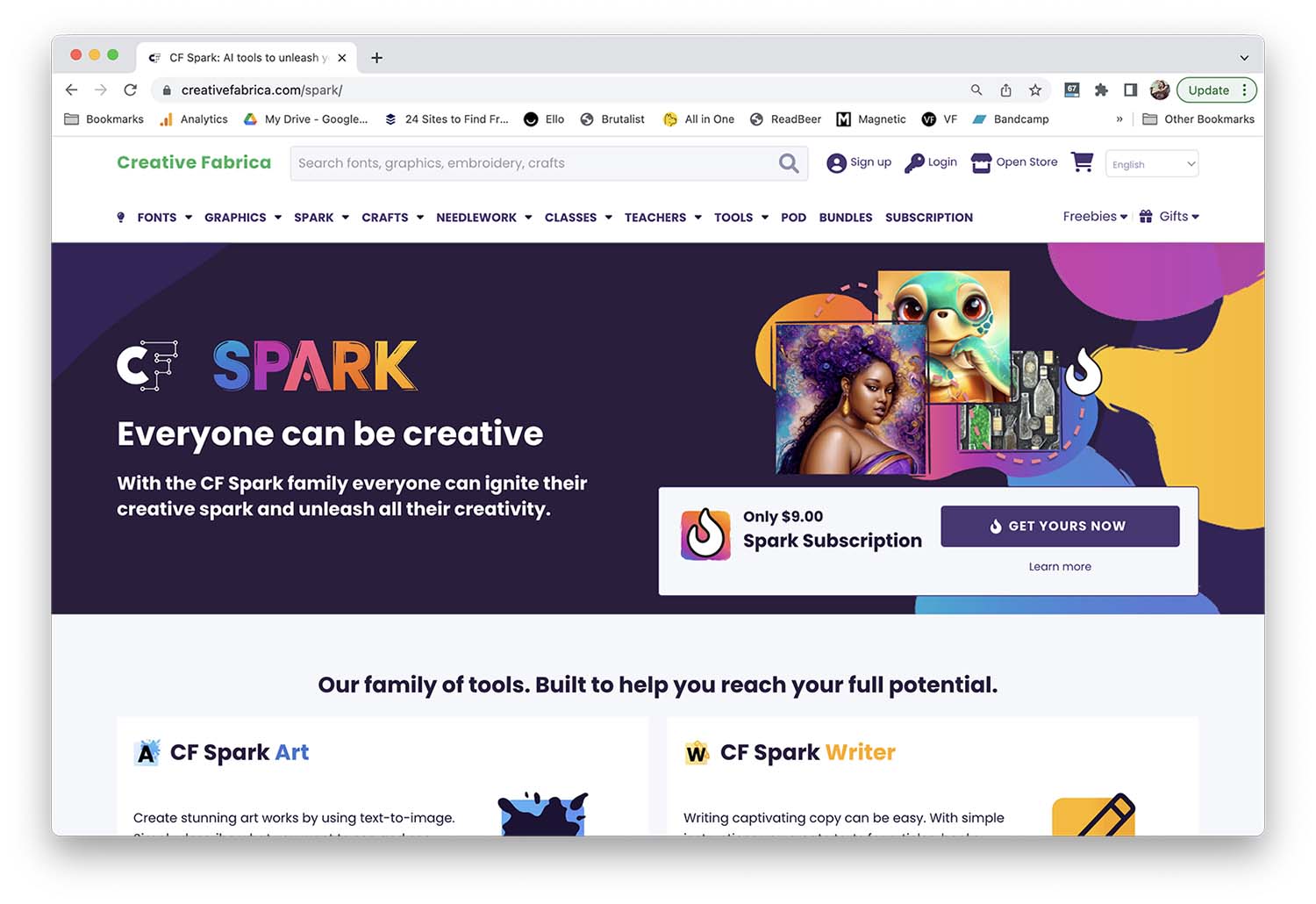
CF Spark Art
CF Spark Art
CF Spark Art is a text-to-image generator tool by Creative Fabrica, a platform for digital assets like fonts, graphics, and more that’s beloved by the online crafting and design community. Their AI art generator tool combines the technology of DALL-E 2 and Stable Diffusion for a more stable and faster image generation.
To use the AI art generator, you simply type in a few keywords to describe what you have in mind. You have the option to choose a preferred image ratio for a customised result. The website has a useful Prompt book where you can get predefined prompt ideas to test out. You can also browse the prompts used by the community to produce the AI art in the website’s community feed. You can use the image generator in tandem with the CF Spark ImageMix to create even more variations of your generated art.
Since CF Spark Art’s launch, Creative Fabrica has developed even more specialized AI art generators that are geared towards graphic designers and crafters, including CF Spark Pattern and CF Spark Crystalline. They also have AI text generators under the CF Spark Write category.
Key Features of CF Spark Art
Prompt-based generation: Able to generate four images in different art styles from a single text prompt
Predetermined art styles: Users can choose from the different art styles below the text field to make their generated images even more specific to their requirements.
Different ratio options: Creators can choose from different aspect ratios before generating their images.
Faster generation: One of the fastest AI art generators, with an option to “skip the queue” and generate images faster with speed credits when subscribed
Wide library of pre-existing AI art: Since its launch, CF Spark’s community feed has grown to include previously generated and published AI art generated by its users
Ability to hide prompts: If subscribed, users have the option to hide their text prompts to protect their ideas.
Private download option: As part of the Spark subscription, creators can download their generated images privately and choose not to publish them on the community feed.
Commercial license: With the Spark subscription, creators can use their generated content on their designs and merchandise for commercial purposes.
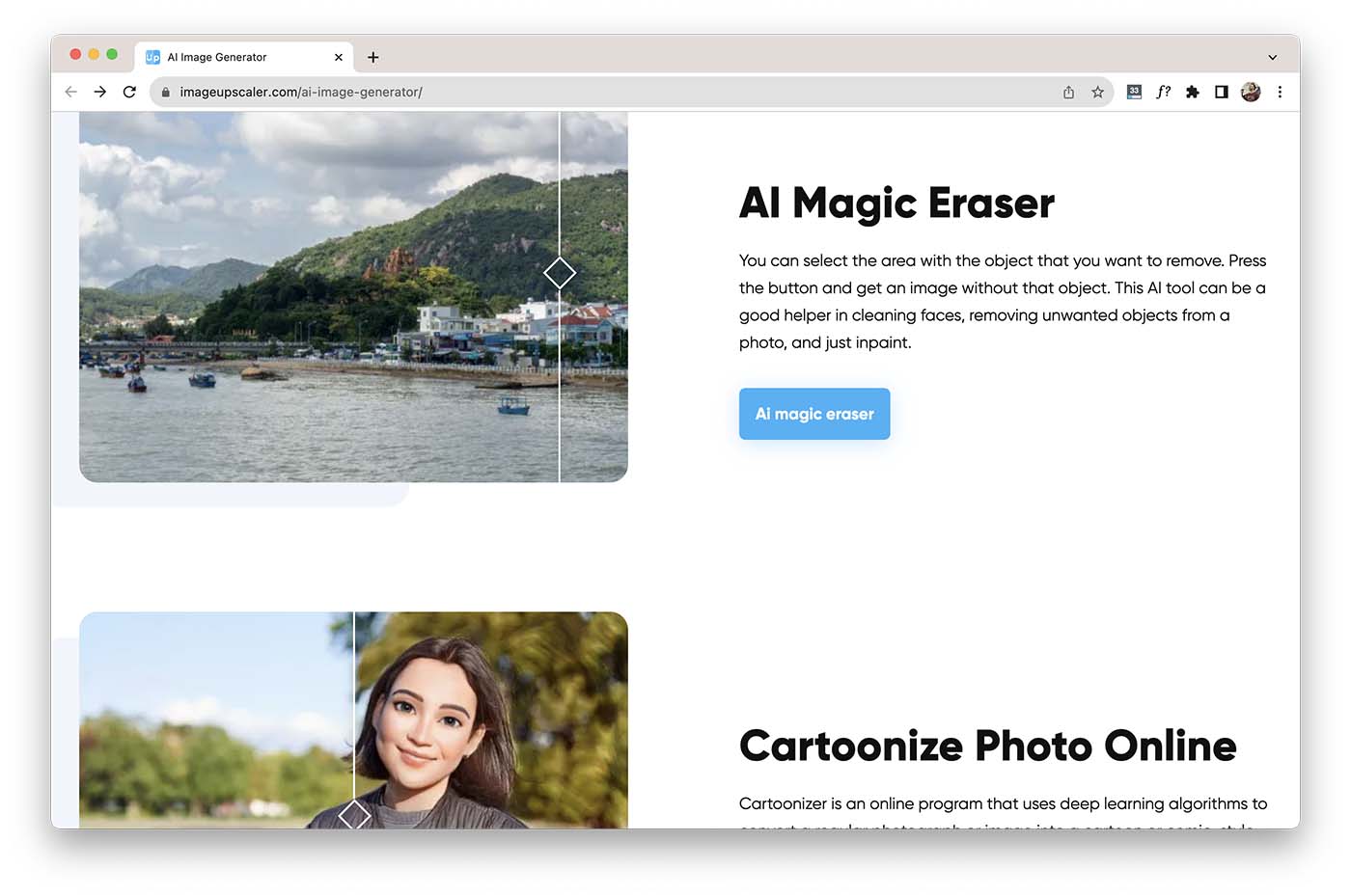
AI Image Generator by Image Upscaler
AI Image Generator by Image Upscaler
The AI Image Generator is a cutting-edge tool that seamlessly blends the power of artificial intelligence with the creativity of digital art. This innovative platform allows users to generate high-quality AI images from text descriptions, offering a unique blend of technology and artistry. With a focus on user-friendliness and efficiency, the AI Image Generator stands out as a remarkable tool for both professional and amateur artists, marketers, and anyone interested in exploring the realm of AI-generated art.
AI Image Generator by Image Upscaler
Key Features of AI Image Generator
Fast and Free: Simply input a text description and select an art style from a dropdown menu to generate stunning images. This process is not only intuitive but also remarkably quick, taking approximately 20-60 seconds. 5 images are free for users without an account, making it an accessible option for those wanting to experiment. Subsequent use involves free and paid monthly subscriptions for more frequent use.
Diverse Artistic Styles: The platform offers a variety of art styles, including photo, modern, cartoon, watercolor, anime, cyberpunk, and psychedelic, catering to a wide range of artistic preferences and project requirements. In case you cannot find the desired style, you have the option to specify your own.
High-Resolution Output: Images are generated in a 1024×1024 PNG format, ensuring high quality and clarity.
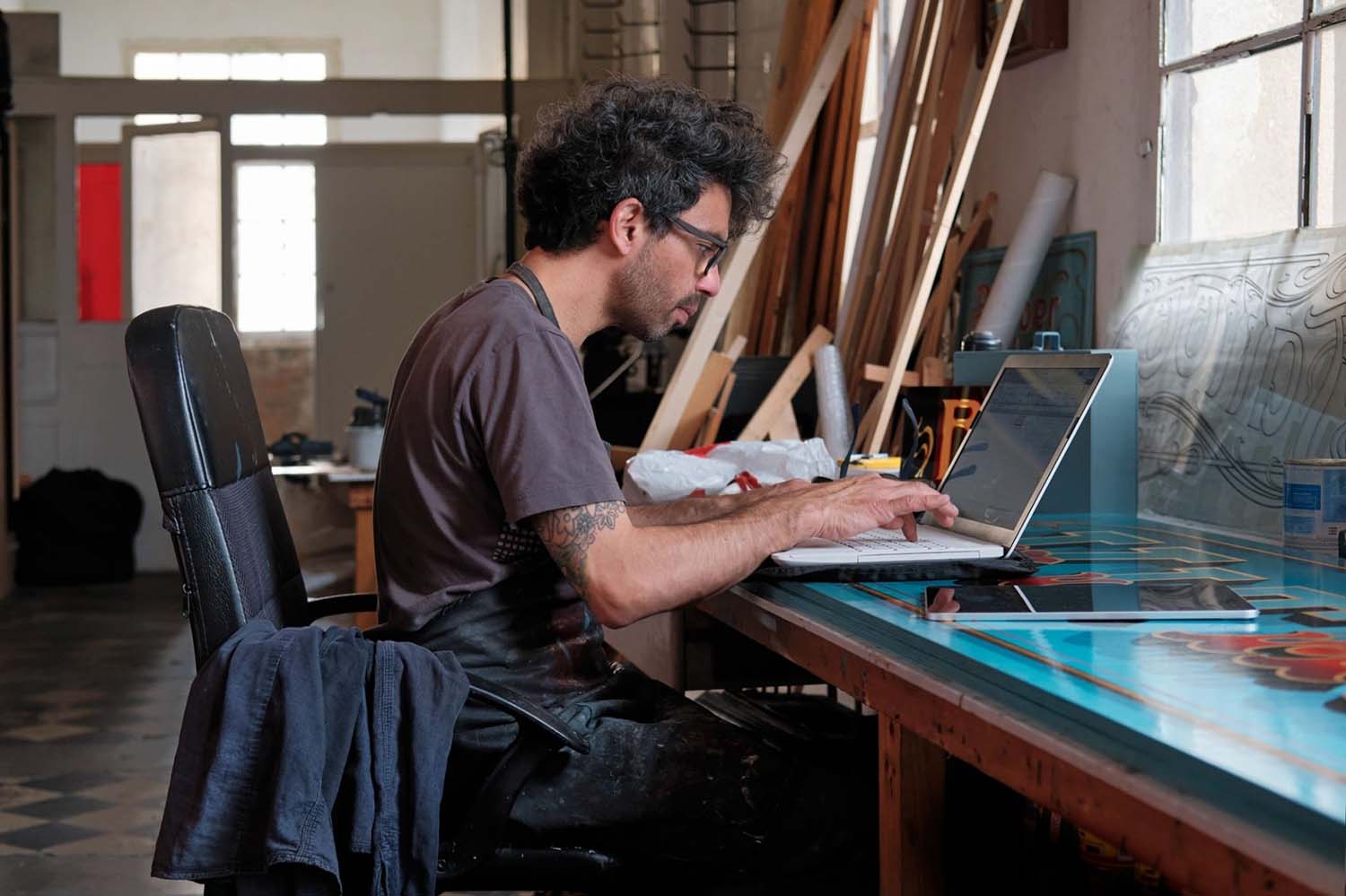
AI Art FAQs
Will AI art replace artists?
AI art is unlikely to fully replace human artists because the creative process is deeply personal and involves unique decision-making that machines cannot replicate. Although AI art generators can create visually appealing and original pieces, they lack the intent and meaning that human artists bring to their work. Also, AI-generated art is often constrained by the data and parameters it was trained on.
Instead of replacing artists, artificial intelligence and machine learning can be seen as tools that help artists expand their creative horizons and enhance their work. However, AI cannot substitute for the human touch and emotional connection that artists have with their creations.
Can AI art be copyrighted?
The legal status of AI-generated art is still in flux, with no clear consensus on whether such art can be copyrighted. In some places, copyright law might protect the code used to create AI-generated art, but not necessarily the resulting images. In other jurisdictions, the images themselves might be eligible for copyright protection if they meet the criteria for original works of authorship.
Determining whether AI-generated art qualifies as an original work of authorship is complex and depends on factors like the extent of human involvement in the creative process and the originality of the resulting images.
Additionally, AI-generated art could be protected under other legal frameworks, such as trademark, trade secret, contract, or database protection laws.
It’s important to recognize that laws and regulations vary by jurisdiction, and the legal status of AI-generated art may evolve alongside the technology and its applications. If you’re considering using or selling AI-generated art, consulting a legal professional is advisable to understand the specific laws that apply to your situation.
Can AI generated art be sold?
Yes, AI-generated art can be sold, just like any other artwork created by a human artist. However, the question of ownership and copyright of AI-generated art can be complex. In general, the copyright of AI-generated art will belong to the person or entity that created the AI algorithm or trained the AI model that produced the artwork.
This would typically be the company or individual that developed the AI software. However, if the artwork is created using pre-existing images or other copyrighted content, then the copyright of the final work may be shared or subject to permission from the original copyright holder.
As the field of AI art is still relatively new, there is no clear legal framework for the sale and copyright of AI-generated art. This means that the sale of AI art may be subject to different laws and regulations in different countries, and it’s important for artists, buyers and sellers to be aware of the legal considerations when buying or selling AI-generated art.
Are AI art generators safe?
AI art generators are generally safe to use, provided you adhere to the terms and conditions of the specific service. However, some of these tools may collect user data, so it’s crucial to review and understand the privacy policy before using them.
When using AI-generated images, it’s essential to comply with copyright laws and regulations. Typically, AI-generated artwork is considered the property of the software creator rather than the person who inputs the prompts.
Some AI art generators offer options to purchase or license the generated images, but it’s important to carefully read the terms of service to understand your rights and any limitations on how you can use the images.
Which AI art generator is best?
It’s difficult to say which AI art generator is the “best” as it can depend on the specific needs and preferences of the user. Some factors to consider when choosing an AI art generator include the quality and variety of the images it can produce, the ease of use and customisation options, and the cost.
Additionally, some AI art generators may be better suited for specific types of art or use cases, such as creating realistic images or abstract artwork. It’s recommended that you research and test different AI art generators before choosing the one that best fits your needs.
In our research, though, Jasper has come out as a real all-round contender that should not be overlooked.
When did AI art start?
AI art has been around for several decades, but it has evolved significantly in recent years due to advances in deep learning and neural networks. Early forms of AI art were created using more basic algorithms, such as evolutionary algorithms and rule-based systems.
The first AI artworks were created in the 1960s and 1970s by artists and researchers who were experimenting with early computers. However, the use of deep learning and neural networks in the creation of AI art has become more prevalent in recent years, allowing for the creation of more realistic and detailed images.
What are the benefits of AI art?
AI art can be good for a number of reasons. One of the main benefits is that it can help to democratise the art-making process by making it more accessible to people who may not have traditional artistic training or resources.
Additionally, AI art can create new forms of art that would be difficult or impossible to create with traditional methods, and it can also be used to enhance or augment existing art. AI art can also be used in a variety of different fields, such as advertising, design, and entertainment, making it a versatile tool.
AI art can also be used to create art that is interactive or that changes over time, which can make it more engaging and dynamic.
Can AI art be dangerous?
AI art can be used for a variety of purposes, some of which may be considered “dangerous” depending on the context. For example, AI art can be used to create deepfake videos or images that can be used to spread misinformation or propaganda. It can also be used to create highly realistic images of people or objects that don’t actually exist, which could be used to scam people or spread false information.
However, AI art can also have positive uses. It can be used to generate new and unique forms of art that would be difficult or impossible to create by hand, opening up new possibilities for artists and creators. It can also be used in fields such as architecture, product design, and advertising to quickly generate and test new ideas.
Overall, like any technology AI art can be used for good or bad depending on who is using it and how it is being used. It’s important to be aware of the potential risks and use it responsibly.
Has AI art won any art prizes?
Yes, AI art has won some art prizes. In 2019, the first AI art prize, the Lumen Prize, was awarded to the AI-generated artwork, “The Deep Listeners”, created by the artist group, “Team Human”. In 2020, a portrait of a fictional person generated by AI, “Edmond de Belamy” sold at Christie’s auction house for $432,500, setting a new record for a piece of AI-generated art.
The artwork was created by the French art collective Obvious using a GAN (Generative Adversarial Network). There are many other examples of AI-generated artworks being exhibited, sold and winning prizes in different museums, galleries and art festivals across the world.
Can anyone create AI art?
AI art can be created by anyone with the right tools and knowledge. There are a variety of AI art generators available online that are easy to use and require little to no technical expertise.
Additionally, there are open-source AI libraries and frameworks, such as TensorFlow and PyTorch, that can be used to create custom AI art generators. However, creating high-quality AI art requires a good understanding of the underlying algorithms and techniques, as well as a deep understanding of the artistic process.
It also requires a good understanding of the limitations of the AI and data, as well as the parameters set by the user. Some good understanding of programming is also useful, but not mandatory for some pre-trained AI art generators.
What are the limitations of AI art?
AI art is limited by the quality and quantity of data it is trained on, the algorithm and parameters used, and the capabilities of the hardware it runs on. Additionally, while AI art can be quite convincing, it is not truly autonomous or creative in the same way that human artists are. It is ultimately a tool that can be used to generate new art, but it is not a replacement for human creativity.
Another limitation of AI art is that it is dependent on the input data and the model that is used for generating the art, which means that it will be restricted to the styles and patterns it has seen in the training data. It may not be able to create something truly novel or original if it has not seen similar examples in the training data.
Additionally, there are ethical concerns related to AI art, such as the potential for it to be used to create deepfakes or synthetic media that can be used to deceive or manipulate people.
What are deepfakes?
Deepfakes are a type of artificial intelligence (AI) technology used to generate synthetic, or fake, videos and images.
The technology uses machine learning algorithms to manipulate and superimpose existing images and videos of a person onto a different image or video, creating the appearance that the person in the original image or video is doing or saying something they are not.
The term “deepfake” comes from the use of deep learning, a type of machine learning, in the technology. Deepfakes can be used for a variety of purposes, including creating fake news and propaganda, and are considered a form of disinformation.
How can deepfakes influence the future?
Deepfakes are a type of AI-generated content that uses machine learning algorithms to manipulate or synthesise video or audio to create realistic-looking or sounding media that appears to be real, but is not. They have the potential to impact the future in several ways.
One potential impact is on the field of media and entertainment. With the increasing ability to create realistic deepfake videos, it could become more difficult for audiences to distinguish between real and fake content, which could lead to confusion and mistrust of the media. Additionally, deepfakes could also be used to create counterfeit videos or images, which could be used to spread disinformation or misinformation.
Another potential impact is on personal privacy and security. Deepfakes could be used to create fake videos or images of individuals, which could be used to blackmail, extort, or otherwise harm the person depicted. Additionally, deepfakes could also be used to impersonate individuals online, which could lead to a loss of privacy and identity.
Deepfakes also have the potential to impact politics, as they could be used to create fake videos or images of political figures that could be used to spread false information or propaganda, potentially swaying public opinion.
Finally, deepfakes may also have an impact on the future of the legal system, as it becomes more difficult to distinguish between real and fake content, it may be more difficult to prove authenticity in court.
It’s important to note that deepfakes are not only used for bad purposes and can be used for positive purposes. As an example, it can be used in the entertainment industry to create realistic special effects, in the medical field to create 3D simulations for surgical training, and many more.
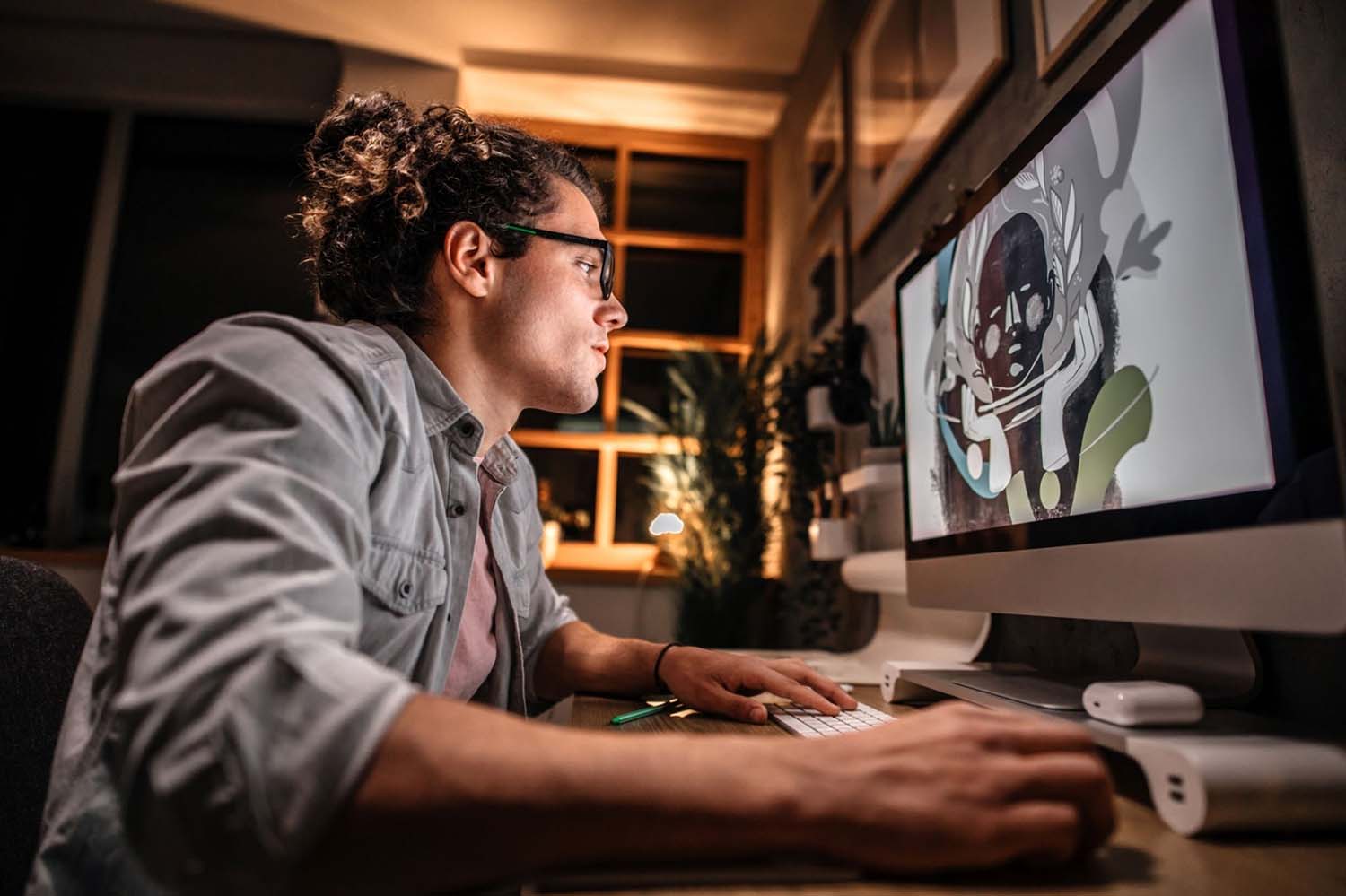
How AI Art Works
AI art generators work by using artificial intelligence algorithms, such as neural networks, to generate art. These algorithms can be trained on a dataset of existing art, or they can create art from scratch using techniques such as generative models.
The art generated by these programs can take many forms, including images, videos, music, and even text. The AI algorithms used can generate new art with some degree of creativity, but mostly it’s using pre-learned patterns and styles. The AI can also modify the existing art with certain parameters given by the user, like the color scheme or some shapes.
One of the most common AI art generators is called GAN (Generative Adversarial Networks) which uses two neural networks to create AI art, one is generating and the other one is comparing it to real-world examples. This way, the generator can improve its output and make it look more realistic.
It’s important to note that AI art generators are not truly autonomous, they need to be fed and trained with data to be able to create new art. The final output is also limited by the quality and quantity of the data, the algorithm and the parameters set by the user.
What exactly are GANs?
Generative Adversarial Networks (GANs) are a type of deep learning model that are composed of two neural networks: a generator and a discriminator. The generator produces new data, such as images, while the discriminator tries to distinguish the generated data from real data. The two networks are trained together in a process called adversarial training, where the generator tries to produce data that can fool the discriminator, and the discriminator becomes better at distinguishing the generated data from real data.
The generator network learns to produce data that conforms to the distribution of real data, while the discriminator network learns to distinguish between real and generated data. As the two networks continue to learn and improve, the generator becomes more skilled at producing data that is indistinguishable from real data. The output of GANs can be very diverse and can be used for image generation, video generation, audio generation and much more.
AI Art Generators, in Conclusion
The future of AI art generators is very promising, as they are becoming more sophisticated and are able to generate more realistic and high-quality images and videos. This means that in the future we can expect to see more AI-generated art being used in various fields such as advertising, entertainment, and even fine art.
Moreover, the use of AI art generators can benefit the everyday life in many ways, it can help artists to generate new ideas and to explore new styles, it can help photographers to edit and enhance their pictures, and it can help people to create personalised artworks for their homes or as gifts. Also, it can help in creating a more diverse range of artworks, as AI art generators can generate artworks that might be difficult or impossible for human artists to create.
It’s important to keep in mind that AI art generators are not truly autonomous, they need to be fed and trained with data to be able to create new art, the quality and quantity of the data, the algorithm and the parameters set by the user will affect the final output. However, this doesn’t detract from the benefits that AI art generators can bring to the art world and to our daily lives. They allow for a wider range of creativity and expression, and they can help to democratise access to art.
In conclusion, AI art generators are a powerful tool that can greatly benefit the art world and the society as a whole. They can help to create a more diverse range of artworks, they can help artists to generate new ideas and to explore new styles, and they can help to democratise access to art.

